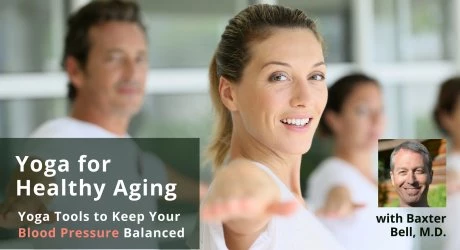Book Review: Yoga for Healthy Aging: A Guide to Lifelong Well-Being
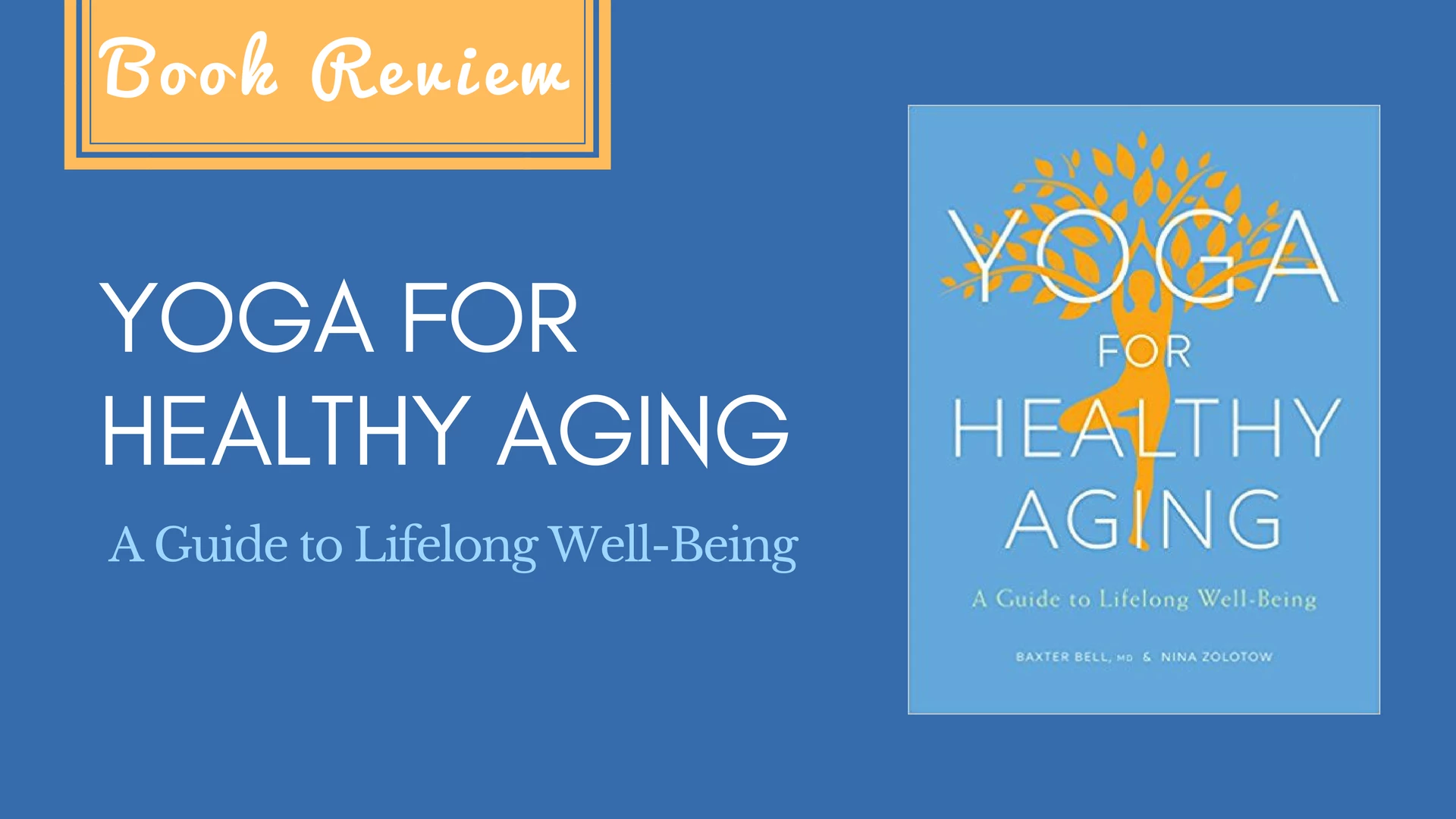
Western culture is so continuously bombarded with negative messages about aging that most of us hardly notice it. It is widely accepted that if you’re moving into your middle years—or especially your elder years—your life is pretty much in decline and you—and your voice—become less and less relevant.
Embedded in Western culture as it now is, popular Western yoga has adopted much the same attitude. Sure, there are elder teachers whose voices are still heard and respected, but for the most part, the wider yoga culture has skewed toward youth and fitness.
The proliferation of yoga teacher trainings has unleashed a massive crop of 20-something teachers and bloggers. They bring curiosity, enthusiasm and innovative ideas into the mix, and that can be a healthy addition to a time-honored tradition. But until a yoga teacher has walked far enough along the yogic path, and the life path, to understand the ever-evolving nature of body and mind—especially after age 50—it is difficult for them to understand how to make their classes and writings speak to people outside their own demographic.
That’s why Yoga for Healthy Aging: A Guide to Lifelong Well-Being by Baxter Bell, MD and Nina Zolotow is such a breath of fresh air. Founders of a popular blog of the same name, Bell and Zolotow have assembled a comprehensive text that clearly explains the natural changes that take place as our bodies age, and how yoga—the entire system of yoga—can help us to navigate these changes with ease and grace.
a comprehensive text that clearly explains the natural changes that take place as our bodies age, and how yoga—the entire system of yoga—can help us to navigate these changes with ease and grace.
Bell and Zolotow explain at the outset that their book does not promise to extend our lifespans. Rather, it is intended to give us the tools that may help us extend what they call our “health span.” The authors define “health span” thusly: “ … your ‘health span’ is equal to your lifespan minus the amount of time you spend in ill health. This is the period in your life during which you are generally healthy and free from serious or chronic illness. When we talk about healthy aging we don’t mean increasing your lifespan or your longevity. Instead, we mean doing what you can to keep your health span as long as possible (and the period of time you spend in ill health near the end of your life as short as possible).”
Many lifestyle factors contribute to extending your health span. In addition to developing healthy dietary habits, these factors include regular exercise and stress management. Hatha yoga, the practice of physical postures and breathing exercises, along with contemplative practices that are part of the larger system of yoga, can directly cultivate the latter two.
In Part One of the book, the authors cite four essential physical qualities that, taken together, must be cultivated in order to extend your health span. These are strength, flexibility, balance, and agility. Bell and Zolotow devote a chapter to each of these qualities. Each chapter describes how these skills can diminish in the process of aging—if we neglect to continue to develop them. The book then describes how yoga practice can help us not only retain these abilities, but can actually sometimes increase them as we age.
Also in Part One are chapters that address heart and cardiovascular system health, nervous system health, stress management, cultivating equanimity and applying yoga philosophy to your asana practice and daily life.
Each of the chapters on the four skills, along with those that address cardiovascular and nervous system health, describes the natural physiological changes associated with aging and how these can challenge the four basic skills as well as the cardiovascular and nervous systems. I particularly appreciate the way in which Bell and Zolotow approach what could be, for laypeople, technically challenging physiological concepts. They obviously know their stuff. But they don’t get bogged down in anatomical minutiae, preferring instead to focus on the big picture—the how and why of the physiology of aging and how it affects our lives. The language is always clear and comprehensible, and the concepts they present clarify the material that follows.
Each physiological discussion is followed by an explanation of how yoga can help mitigate the challenges of aging, which is, in turn, followed by discussions of how to use your yoga practice to cultivate each skill and to strengthen the cardiovascular and nervous systems. Each chapter offers specific sequences that address each particular skill or system.
Classes and texts intended for the over-50 crowd often emphasize “chair yoga” and modified postures. While these can be appropriate and welcome—and Bell and Zolotow do address practical modifications for the poses and sequences they introduce—the physical/mental/emotional conditioning of people 50 and beyond can be wildly varied. Some people over 50 lead sedentary lifestyles, while others run marathons. Yoga for Healthy Aging includes both easy and challenging routines, along with modified and unmodified pose descriptions.
In particular, I appreciate the authors’ emphasis on the fact that none of the skills or systems they describe operate in isolation. For example, when we strengthen the nervous system, the cardiovascular system also benefits. When we learn stress management skills and cultivate equanimity, our physical systems, as well as our minds, benefit.
Part Two of the book includes detailed descriptions and photos of all the asanas pictured in the sequences. Each asana description includes benefits and cautions, as well as descriptions of the “classic” pose and several options for using props to modify them. As with the rest of the book, their language is clear, concise and accessible. They’ve left no stone unturned in their how-to descriptions.
I greatly appreciate the tone of Yoga for Healthy Aging. Bell’s and Zolotow’s language is always friendly and engaging. Their descriptions of the inevitable changes that occur in our bodies as we age are neither fatalistic nor overly cheery. Instead, their approach bespeaks the equanimity they appear to have developed in their own practice. The evolution of our bodies as we age is simply what is true—it’s neither good nor bad. These changes are written into our DNA, and Bell and Zolotow approach them with a dispassionate depth of understanding that is refreshing.
No matter how many years we’ve lived in our bodies, the fact is, we are all aging. Every moment. We may not think much about aging before we turn 40, but that doesn’t change the fact that our biological clocks are ticking away. Yoga for Healthy Aging is highly informative, compassionate and a joy to read. It is the most comprehensive text I’ve yet read about this process we’re all navigating and how our yoga practice can grow with us as we age. Yoga for Healthy Aging is a book that you can turn to for knowledge and inspiration for the rest of your life.
Study with Dr. Baxter Bell and YogaUOnline – Yoga for Healthy Aging: Yoga Tools to Keep Your Blood Pressure Balanced.
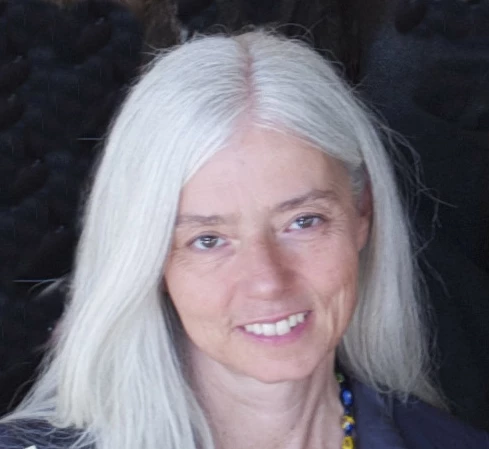
Charlotte Bell began practicing yoga in 1982 and began teaching in 1986. She was certified by B.K.S. Iyengar in 1989 following a trip to Pune. In 1986, she began practicing Insight Meditation with her mentors Pujari and Abhilasha Keays. Her asana classes blend mindfulness with physical movement. Charlotte writes a column for Catalyst Magazine and serves as editor for Yoga U Online. She is the author of two books: Mindful Yoga, Mindful Life and Yoga for Meditators, both published by Rodmell Press. She also edits Hugger Mugger Yoga Products¹ blog and is a founding board member for GreenTREE Yoga, a non-profit that brings yoga to underserved populations. A lifelong musician, she plays oboe and English horn in the Salt Lake Symphony and the folk sextet Red Rock Rondo whose 2010 PBS music special won two Emmys.
about the authors of Yoga for Healthy Aging: A Guide to Lifelong Well-Being
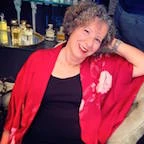 Nina Zolotow, RYT 500, Editor-in-Chief of the Yoga for Healthy Aging blog, is both a yoga writer and a yoga teacher. She trained to be a yoga teacher at The Yoga Room in Berkeley, California, has studied yoga therapy with Shari Ser and Bonnie Maeda, and is especially influenced by the teachings of Donald Moyer. She also studied extensively with Rodney Yee, and is inspired by the teachings of Patricia Walden on yoga for emotional healing. Her special area of expertise is yoga for emotional well-being (including yoga for stress, insomnia, depression, and anxiety) and she teaches workshops and series classes on yoga for emotional well-being, stress management, better sleep, home practice, and cultivating equanimity. Nina is the co-author with Baxter Bell of Yoga for Healthy Aging: A Guide to Lifelong Well-Being and co-author with Rodney Yee of Yoga: The Poetry of the Body (with its companion 50 Card Practice Deck) and Moving Toward Balance. She is also the author of numerous articles on yoga and alternative medicine.
Nina Zolotow, RYT 500, Editor-in-Chief of the Yoga for Healthy Aging blog, is both a yoga writer and a yoga teacher. She trained to be a yoga teacher at The Yoga Room in Berkeley, California, has studied yoga therapy with Shari Ser and Bonnie Maeda, and is especially influenced by the teachings of Donald Moyer. She also studied extensively with Rodney Yee, and is inspired by the teachings of Patricia Walden on yoga for emotional healing. Her special area of expertise is yoga for emotional well-being (including yoga for stress, insomnia, depression, and anxiety) and she teaches workshops and series classes on yoga for emotional well-being, stress management, better sleep, home practice, and cultivating equanimity. Nina is the co-author with Baxter Bell of Yoga for Healthy Aging: A Guide to Lifelong Well-Being and co-author with Rodney Yee of Yoga: The Poetry of the Body (with its companion 50 Card Practice Deck) and Moving Toward Balance. She is also the author of numerous articles on yoga and alternative medicine.
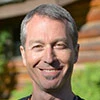 Baxter Bell, MD, C-IAYT, eRYT 500, is a yoga teacher and educator, physician and medical acupuncturist. These days he focuses on teaching yoga full-time, both to ordinary students of all ages and physical conditions and to the next generation of yoga teachers, to whom he teaches anatomy and yoga therapy along with his accessible, skillful style of yoga. Baxter brings a unique perspective to his teaching, combining his understanding of anatomy and medicine with his skill at instructing people from all walks of life and all levels of ability. Baxter is the co-founder and writer for the popular Yoga for Healthy Aging blog, where he shares his knowledge of medical conditions, anatomy, and yoga with practitioners and teachers across the world. In addition to being a frequent presenter at Yoga Journal Alive events and yoga conferences such as IAYT’s SYTAR, he is often quoted as an expert on yoga and health by major national news outlets such as The Washington Post and Wall Street Journal. To learn more, visit www.baxterbell.com, www.yogaforhealthyaging.blogspot.com, and his YouTube channel Baxter Bell Yoga. Baxter is the co-author with Nina Zolotow of Yoga for Healthy Aging: A Guide to Lifelong Well-Being.
Baxter Bell, MD, C-IAYT, eRYT 500, is a yoga teacher and educator, physician and medical acupuncturist. These days he focuses on teaching yoga full-time, both to ordinary students of all ages and physical conditions and to the next generation of yoga teachers, to whom he teaches anatomy and yoga therapy along with his accessible, skillful style of yoga. Baxter brings a unique perspective to his teaching, combining his understanding of anatomy and medicine with his skill at instructing people from all walks of life and all levels of ability. Baxter is the co-founder and writer for the popular Yoga for Healthy Aging blog, where he shares his knowledge of medical conditions, anatomy, and yoga with practitioners and teachers across the world. In addition to being a frequent presenter at Yoga Journal Alive events and yoga conferences such as IAYT’s SYTAR, he is often quoted as an expert on yoga and health by major national news outlets such as The Washington Post and Wall Street Journal. To learn more, visit www.baxterbell.com, www.yogaforhealthyaging.blogspot.com, and his YouTube channel Baxter Bell Yoga. Baxter is the co-author with Nina Zolotow of Yoga for Healthy Aging: A Guide to Lifelong Well-Being.


